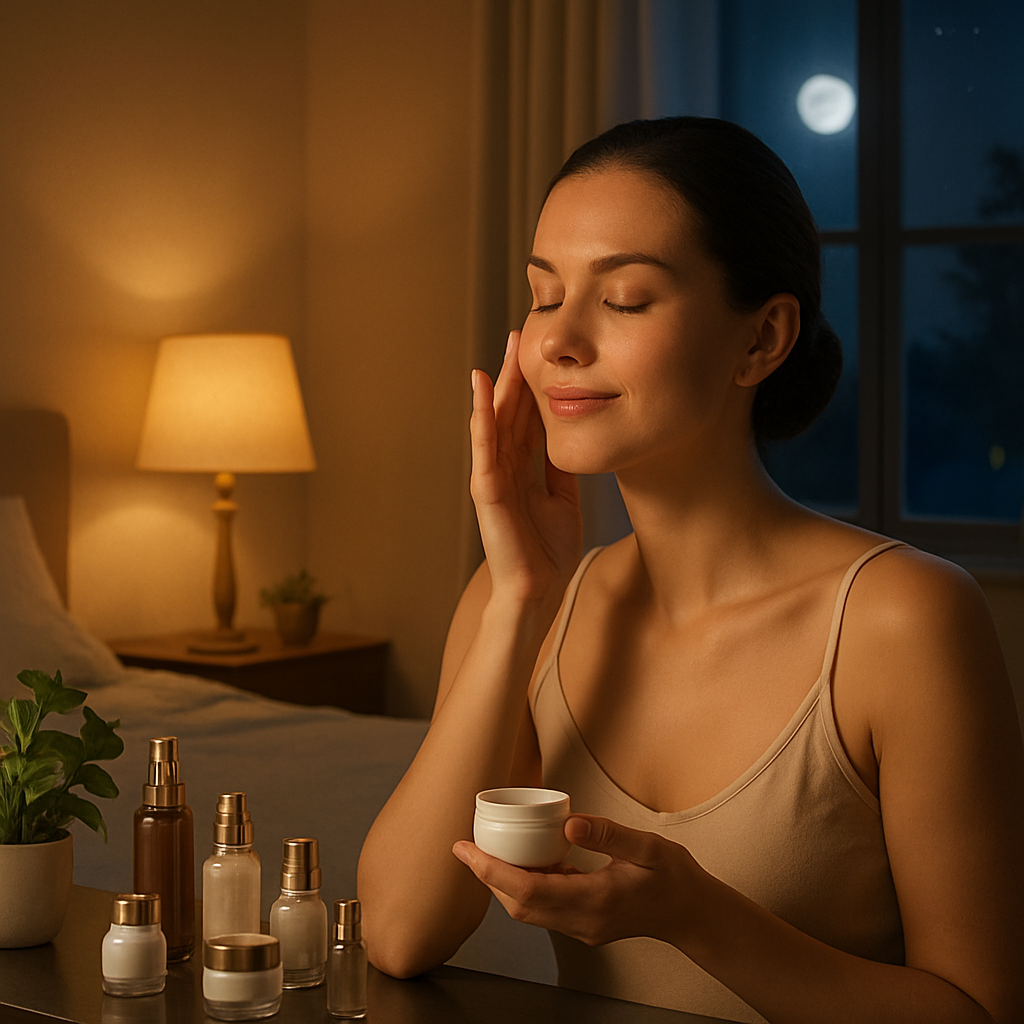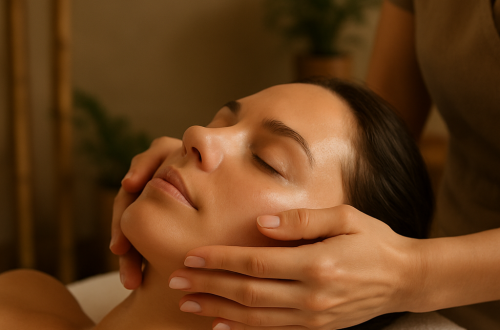Unlocking the Secrets of Nighttime Skin Repair Routines

While you sleep, your skin performs its most impressive magic act. Those precious nighttime hours aren’t just for dreaming – they’re when your skin cells kick into high gear, repairing damage, regenerating tissue, and preparing for whatever tomorrow might bring. This natural renewal process happens whether you’re consciously participating or not, but with the right evening routine, you can dramatically amplify these restorative effects.
Most of us have experienced those mornings when we wake up looking somehow refreshed despite minimal sleep – or conversely, those times when eight solid hours still leaves us looking tired and dull. The difference often comes down to how well we support our skin’s natural nighttime processes.
The science behind skin’s nocturnal activities explains why an effective evening skincare routine matters so much. During sleep, blood flow to skin increases, collagen production accelerates, and cell turnover reaches its peak. Simultaneously, our skin becomes more permeable and receptive to active ingredients. This biological rhythm creates the perfect opportunity to provide your skin with exactly what it needs for optimal repair.
I’ve spent years refining my own nighttime routine through trial and error (and plenty of product testing), discovering what truly works versus what’s just marketing hype. What follows is a practical guide to maximizing your skin’s overnight potential – based on science, dermatologist recommendations, and real-world experience.
The Biology of Sleep and Skin Repair
Your skin follows a circadian rhythm just like the rest of your body. During daylight hours, it’s primarily in defense mode – fighting off UV damage, pollution, and other environmental stressors. But once night falls, it switches to recovery mode.
Research published in the Journal of Investigative Dermatology found that skin cell proliferation nearly doubles at night, peaking between 11 PM and 4 AM for most people. This increased cell turnover helps shed damaged cells and generate fresh ones. Meanwhile, growth hormone levels rise during deep sleep, stimulating collagen production – the protein responsible for skin’s strength and elasticity.
What’s particularly fascinating is how skin permeability changes throughout the day. A study in the British Journal of Dermatology demonstrated that transepidermal water loss (TEWL) increases at night, meaning skin becomes more permeable. While this makes skin more vulnerable to moisture loss, it also creates an ideal window for absorption of active ingredients.
The catch? Poor sleep quality disrupts these processes. Just one night of insufficient sleep can increase inflammatory markers, break down collagen, and accelerate signs of aging. This explains why chronic sleep deprivation often manifests visibly on our skin.
I noticed this connection dramatically after a week of insomnia last year. Despite maintaining my usual skincare routine, my skin looked noticeably duller, fine lines appeared more pronounced, and I developed unexpected breakouts. Once my sleep normalized, my skin bounced back within days – a vivid reminder that no product can fully compensate for quality sleep.
Building Your Optimal Nighttime Routine
A truly effective nighttime routine respects your skin’s biology while addressing your specific concerns. The goal isn’t to pile on as many products as possible but to strategically support your skin’s natural processes.
Start with thorough cleansing
Removing the day’s accumulation of dirt, makeup, sunscreen, and sebum is non-negotiable. Double cleansing – using an oil-based cleanser followed by a water-based one – ensures nothing interferes with your skin’s renewal processes or the absorption of subsequent products.
Dr. Ranella Hirsch, a board-certified dermatologist, explains: “Think of your nighttime routine as preparing a canvas. If you don’t properly clean the canvas first, nothing you apply afterward will work as effectively.”
For oily or acne-prone skin, ingredients like salicylic acid can help clear pores while you cleanse. Dry or sensitive skin benefits from gentle, hydrating cleansers that don’t disrupt the skin barrier. My combination skin does best with a cleansing oil (DHC Deep Cleansing Oil is my longtime favorite) followed by a gentle foaming cleanser.
Incorporate active ingredients strategically
Nighttime is ideal for using your most potent active ingredients. Without daytime concerns about sun sensitivity or makeup compatibility, you can focus on ingredients that accelerate repair and renewal:
- Retinoids remain the gold standard for stimulating collagen production, accelerating cell turnover, and addressing multiple skin concerns from acne to aging. Start with a lower concentration (0.25-0.5% retinol) and gradually increase strength as your skin adapts.
- Alpha hydroxy acids (AHAs) like glycolic and lactic acid help exfoliate dead skin cells, improving texture and brightening complexion. They work particularly well at night when skin is naturally shedding.
- Peptides support collagen production and can strengthen the skin barrier. They’re especially beneficial when paired with moisturizing ingredients.
- Antioxidants like vitamin C, resveratrol, and CoQ10 help neutralize free radical damage and support repair processes. While vitamin C is often recommended for morning use, certain formulations work well at night.
The key is not using all these ingredients simultaneously. Alternating active ingredients on different nights often yields better results than overwhelming your skin with too many potent compounds at once.
I learned this lesson the hard way after creating what I thought was my “super routine” – layering retinol, glycolic acid, and vitamin C in one night. The resulting irritation took weeks to resolve. Now I rotate retinol (three nights weekly), AHAs (two nights), and give my skin “recovery nights” with just hydrating ingredients.
Lock in moisture and support barrier function
After applying active ingredients, seal everything with appropriate moisturizers. Nighttime is perfect for richer formulations that might feel too heavy during the day.
Ingredients to look for include:
- Ceramides, which help restore and maintain your skin barrier
- Hyaluronic acid for intense hydration
- Niacinamide to support barrier function and reduce inflammation
- Natural oils like squalane, rosehip, or jojoba that mimic skin’s natural lipids
For extremely dry skin or harsh climates, consider applying a thin layer of occlusive agent (like Aquaphor or CeraVe Healing Ointment) as your final step. This “slugging” technique prevents moisture loss while you sleep.
My own routine changes seasonally – during winter, I’ll finish with a rich cream containing ceramides and peptides, while summer nights might just need a lightweight gel-cream with hyaluronic acid.
Special treatments: masks, overnight products, and tools
Incorporating weekly treatments can address specific concerns more intensively:
- Overnight masks provide intensive hydration, brightening, or targeted treatment without the time constraints of daytime wear.
- Sheet masks, while not designed for overnight use, can be applied 20-30 minutes before bed, with their essence gently patted into skin afterward.
- Tools like gua sha stones or facial rollers, when used before bed, can help reduce puffiness by stimulating lymphatic drainage. Store them in the refrigerator for enhanced de-puffing effects.
These special treatments shouldn’t replace your regular routine but can supplement it when your skin needs extra attention. I reserve my intensive overnight treatments for Sundays – creating a consistent ritual that helps me prepare mentally for the week ahead while giving my skin an extra boost.
Timing matters
Applying your nighttime skincare too close to bedtime can reduce its effectiveness, as products may transfer to your pillowcase before fully absorbing. Aim to complete your routine at least 20-30 minutes before sleeping.
Dr. Whitney Bowe, dermatologist and author, recommends what she calls “skin cycling” – a scheduled approach that prevents overuse of actives. A typical cycle might include: retinoid night, exfoliation night, two recovery nights, then repeat. This method prevents irritation while maximizing benefits of each ingredient.
The beauty of nighttime skincare lies in its ability to work with your body’s natural processes. By understanding skin biology and choosing products that complement these natural rhythms, you create optimal conditions for repair and regeneration.
Your nighttime routine doesn’t need to be complicated or expensive to be effective. The most sustainable approach focuses on quality over quantity, consistency over complexity, and respecting your skin’s unique needs. With patience and attention, you’ll discover that those overnight hours truly can transform your skin – one night at a time.


